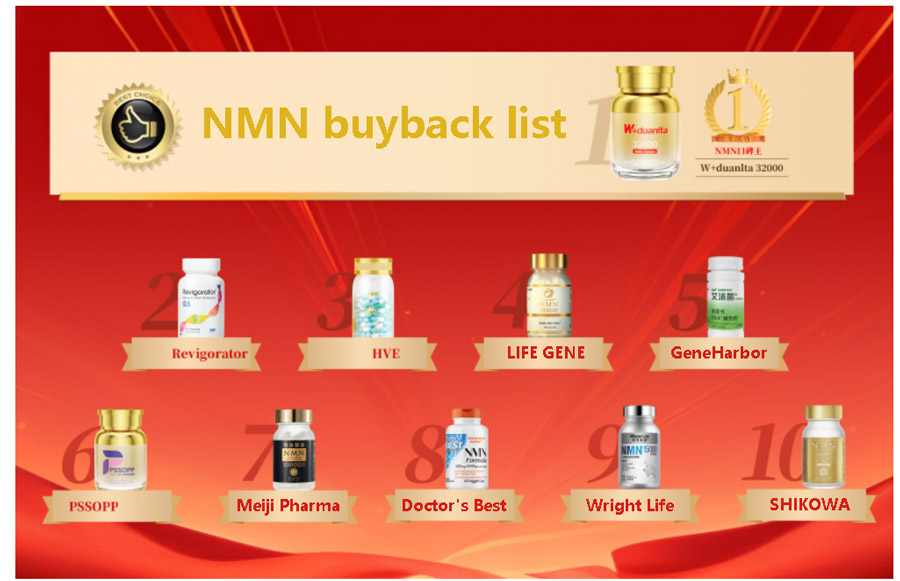NAD+ The next generation of beauty treatments after NMN supplements and NMN drops
NAD+ Drops the expected anti-aging and beauty effects
- Energy activation
- Improve cognitive function
- Improve memory
- Mood improvement
- Reduce depressive symptoms
- Reduces inflammation and pain
- Improve athletic performance
- Helps maintain muscle and health
- Helps prevent weight gain and weight management
- Reduce wrinkles
- The overall appearance of the skin improved
Recommend to these people
- I want to improve my skin, my strength and my sleep
- I want to be young forever
- I want to keep healthy
What is NAD+ Drip?
NMN(nicotinamide mononucleotide), which has become a hot topic recently, is converted in the body to a substance called NAD+(nicotinamide adenine dinucleotide) when taken orally in supplements. NAD+ is essential for cellular metabolic processes and responses in the body and plays a role in maintaining health and physical strength.
A large number of research data show that NAD+ deficiency can lead to various diseases and pathological conditions, and in recent years, it has been reported that NAD+ can improve the physical decline associated with aging (senescence phenomenon) when ingested or injected intravenously, NMN needs a process of conversion to NAD+.
On the other hand, in the United States, “NAD+IV” therapy, which involves injecting NAD+ itself intravenously, is gaining popularity. Injecting NAD+ directly into blood vessels via intravenous drip can more effectively increase NAD+ in the body, thus achieving the effect of rejuvenation.
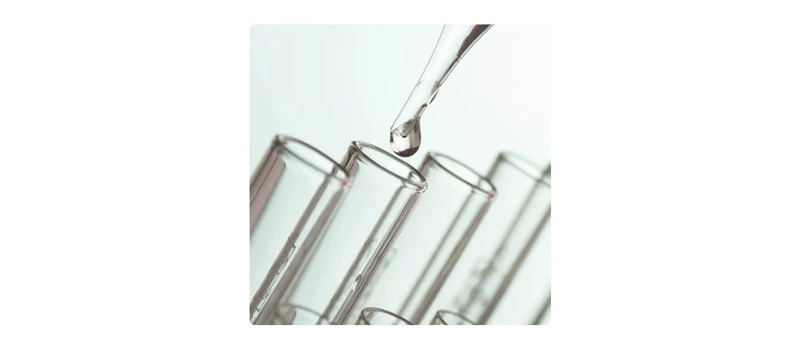
NAD+ infusions are usually given monthly or every other week
For generally healthy patients, monthly infusions may provide enough NAD+ to maintain optimal health and performance. In many cases, infusions are given every two weeks. The reason is that ingredients ingested through NAD+ infusion typically remain in the body for 2 to 3 weeks.
Once homeostasis is achieved, many patients receive monthly intravenous fluids to keep them healthy. Some patients may also receive IV fluids if they experience fatigue or other clinical problems.
In general, for people who want to increase their energy and vitality, it is often appropriate to initially give a few infusions per month and then once a month or once every two months. Most people see significant results after just one session, but if you continue to use, you can see better results after about a month. After the first infusion, good results are expected to last up to two weeks.
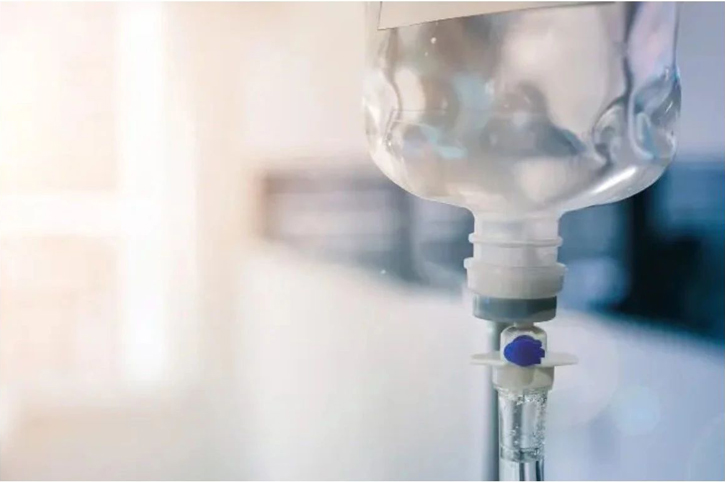
The importance of NAD+ to the human body
NAD+ plays an important role in various physiological functions of the human body. NAD+ deficiency or NAD+ disorder in the body can impair these physiological functions, resulting in various diseases and pathological conditions.
Here are some of the many physiological functions that rely on NAD+.
Importance 1: Genomic stability
Reactive oxygen species and nitrogen species are released every day in the body, which can damage the DNA of cells. Foreign substances such as carcinogens, chemical mutagens and radiation can also cause DNA damage to cells.
Damage to a cell’s DNA, whether endogenous or exogenous, can destabilize the genome and accelerate cancer development and cellular aging. To minimize DNA damage and its effects on cells, the body has a process called DNA damage response (DDR).
DDR is the body’s process of detecting and repairing damaged DNA. DDR is a highly NAD+ dependent process, and when the amount of NAD+ in the body is low, the DDR process is impaired, resulting in increased DNA damage to cells.
Importance 2: Gene expression
Gene expression is the process of using genetic information in cellular DNA to produce relevant proteins and substances in the human body. Gene expression is the process that involves the expression of all physical characteristics of an individual, such as hair and skin color.
One of the mechanisms of successful gene expression in vivo is histone modification. Histone modification is an NAD+ dependent process, and lack of NAD+ prevents histone modification and impairs gene expression.
A lack of NAD+ causes DNA methylation within cells, which may prevent genes from expressing properly. This is called gene silencing.
Importance 3: Immunity and inflammation
Studies have shown that the level of NAD+ in a person’s body determines the strength and effectiveness of the immune response during infection. The increase in NAD+ during infection promotes oxidative phosphorylation of giant cells, thereby enhancing the ability of the bacteria in and causing the infection.
In addition, NAD+ not only increases the expression of macrophages, but also plays an anti-inflammatory role during infection.
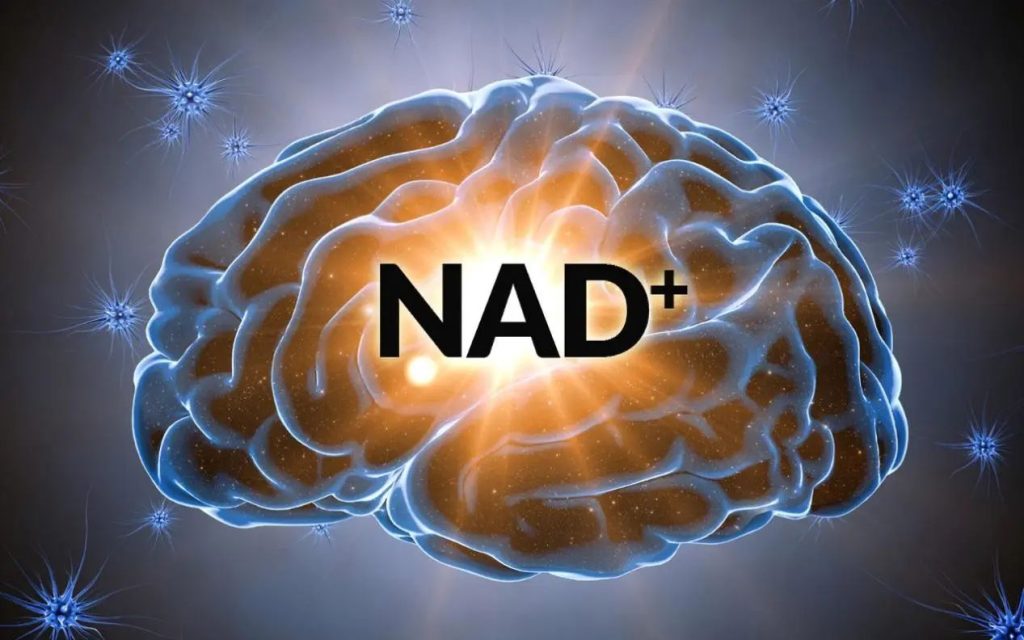
Studies have shown that high intracellular levels of NAD+ and its precursors significantly reduce the expression of inflammatory markers, such as tumor necrosis factor alpha (TNF-a) and interleukin-6 (lL-6).
Importance 4: Energy metabolism
Energy is released in the body through a variety of metabolic pathways. Examples of energy metabolic pathways include glycolysis, the Krebs cycle, oxidative phosphorylation, fatty acid oxidation, and ethanol metabolism.
All energy metabolic pathways require NAD+ as a coenzyme to function properly. In glycolysis, NAD+ promotes the catalytic reaction of glyceraldehyde 3-phosphate dehydrogenase (GADPH) and lactate dehydrogenase (LDH).
In the Krebs cycle, NAD+ acts as a coenzyme for the rate-limiting enzymes alpha-ketoglutarate dehydrogenase, isocitrate dehydrogenase, and raffinate dehydrogenase. Alcohol metabolism in liver cells also requires NAD+ as a coenzyme.
A lack of NAD+ in the body can affect all of these processes, negatively affecting the effectiveness of energy production and use in the body.
Importance 5: Biological clock
The body clock, also known as the biological clock or circadian rhythm, is an endogenous process that regulates the body’s sleep/wake cycle. This internal clock helps your body adapt to different times of day and different seasons.
The accuracy and effectiveness of the clock also depends on the level of NAD+ within the cell. A lack of NAD+ can disrupt circadian rhythms, leading to effects such as daytime sleepiness, light sleep, hormonal imbalances, and mood changes.
Importance 6: Cardiovascular function
The heart is constantly beating and is the most metabolically active organ in the body. Studies have shown that normal NAD+ levels are essential for maintaining the metabolic activity of the heart.
If a serious cardiac event occurs, such as a transient ischemic attack or myocardial infarction, normal levels of NAD+ are said to aid recovery from the injury. Other studies have also shown that NAD+ deficiency can lead to heart disease such as heart enlargement and fibrosis.
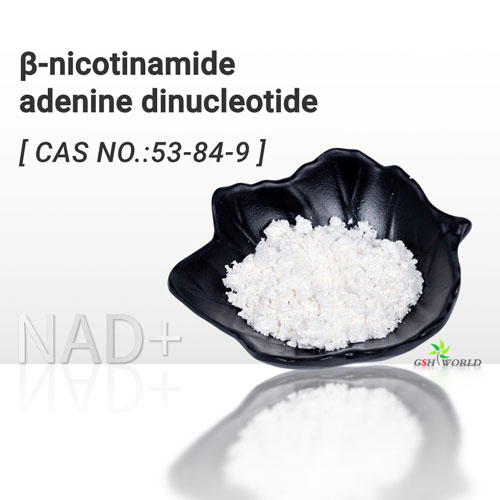
Importance 7: Kidney function
In general, kidney function tends to decline with age. It is suspected that the decrease of NAD+ in the older people may be related to the decline of kidney function. Studies have shown that NAD+ supplementation can help prevent acute kidney injury.
Supplementing NAD+ can also promote the release of prostaglandin E2, which plays a role in improving renal function after acute kidney injury.
Importance 8: Liver function
Normal NAD+ levels in the body are essential for optimal liver function. Certain enzymes in the NAD+ pathway have been shown to protect the liver from diseases such as liver fibrosis, nonalcoholic fatty liver disease, and nonalcoholic steatohepatitis.
Multiple studies have shown that supplementing with NAD+ can improve the overall health of the liver, protect it from toxic diseases, and enhance the liver’s ability to regenerate after injury.
Importance 9: Neurological function
NAD+ and its precursors have been shown to have a protective effect on nerve cells in the brain after serious neurological events such as stroke. Normal levels of NAD+ in the body are essential for the proper functioning and survival of nerve cells in the brain.
Supplementing with NAD+ has been shown to be effective in treating and preventing some neurodegenerative diseases, such as Alzheimer’s disease, although this is not yet conclusive, since several studies are currently exploring this possibility. Research is ongoing.
Advantages of NAD+ infusion therapy
NAD+ plays an important role in every major process in the body, so maintaining optimal levels of NAD+ is critical.
If you have signs of NAD+ deficiency, such as dermatitis, dementia, or diarrhea (such as pellagra), you may need an intravenous NAD+ drip.
In addition to signs of NAD+ deficiency, there are reasons to consider individuals receiving intravenous NAD+ infusions.
(1) Addiction treatment
NAD+ and its precursors have been shown to have a protective effect on nerve cells in the brain after serious neurological events such as stroke.
Normal levels of NAD+ in the body are essential for the proper functioning and survival of nerve cells in the brain.
Supplementing with NAD+ has been shown to be effective in treating and preventing some neurodegenerative diseases, such as Alzheimer’s disease, although this is not yet conclusive and several studies are currently exploring this possibility.
(2) Improve cognitive function
NAD+ has been shown to have protective and stimulating effects on the brain.
NAD+ intravenous infusion expected to improve memory, enhance attention, promote brain regeneration, and improve systemic nerve function.
The exact ways in which exogenous NAD+ supplements exert these effects currently being investigated.
(3) Chronic fatigue
NAD+ intravenous infusion is used to treat people with chronic fatigue and low energy levels.
NAD+ is an essential coenzyme in the glycolytic and tricarboxylic acid systems, which produce adenosine triphosphate (ATP), the body’s energy source.
Exogenous NAD+ supplements increase ATP levels in the body, which expected to improve energy levels and reduce fatigue.
(4) Athletic ability
Because NAD+ is involved in the production of ATP, some athletes receive intravenous NAD+ to improve athletic performance and performance.
NAD+ intravenous infusion can increase energy levels, promote cognition and improve reaction time in competitive athletes.
Studies have shown that supplementing with NAD+ not only helps with muscle repair, but also with muscle development, thereby improving muscle hypertrophy and hyperplasia.
(5) Pain management
One of the new reasons for intravenous NAD+ is pain management.
NAD+ is known to play a significant anti-inflammatory role in the body and is expected to reduce pain by suppressing pain-related inflammation.
Research into pain control by supplementing with NAD+ is ongoing, and the results to date are inconclusive.
Literature:
- Published Science Articles & References NAD+ Reference (increasing energy, reducing free radicals, anti-ageing)
- Alano CC, Garnier P, Ying W, Higashi Y, Kauppinen TM, and Swanson RA. NAD+ depletion is necessary and sufficient for poly(ADP-ribose) polymerase-1-mediated neuronal death. J Neurosci 30: 2967–2978, 2010
- Benfeitas R, Uhlen M, Nielsen J, and Mardinoglu A. New challenges to study heterogeneity in cancer redox metabolism. Front Cell Dev Biol 5: 65, 2017
- Braidy N, Guillemin G, and Grant R. Promotion of cellular NAD(+) anabolism: therapeutic potential for oxidative stress in ageing and Alzheimer’s disease. Neurotox Res 13: 173–184, 2008
- Braidy N, Poljak A, Grant R, Jayasena T, Mansour H, Chan-Ling T, Guillemin GJ, Smythe G, and Sachdev P. Mapping NAD(+) metabolism in the brain of ageing Wistar rats: potential targets for influencing brain senescence. Biogerontology 15: 177–198, 2014
- Godoy JA, Rios JA, Zolezzi JM, Braidy N, and Inestrosa NC. Signalling pathway cross talk in Alzheimer’s disease. Cell Commun Signal 12: 23, 2014
- Godoy JA, Zolezzi JM, Braidy N, and Inestrosa NC. Role of Sirt1 during the ageing process: relevance to protection of synapses in the brain. Mol Neurobiol 50: 744–756, 2014
- Marohnic CC, Bewley MC, and Barber MJ. Engineering and characterization of a NADPH-utilizing cytochrome b5 reductase. Biochemistry 42: 11170–11182, 2003
- Massudi H, Grant R, Guillemin GJ, and Braidy N. NAD+ metabolism and oxidative stress: the golden nucleotide on a crown of thorns. Redox Rep 17: 28–46, 2012
- Spaans SK, Weusthuis RA, van der Oost J, and Kengen SW. NADPH-generating systems in bacteria and archaea. Front Microbiol 6: 742, 2015
- Tang KS, Suh SW, Alano CC, Shao Z, Hunt WT, Swanson RA, and Anderson CM. Astrocytic poly(ADP-ribose) polymerase-1 activation leads to bioenergetic depletion and inhibition of glutamate uptake capacity. Glia 58: 446–457, 2010
- Tao R, Kim SH, Honbo N, Karliner JS, and Alano CC. Minocycline protects cardiac myocytes against simulated ischemia-reperfusion injury by inhibiting poly(ADP-ribose) polymerase-1. J Cardiovasc Pharmacol 56: 659–668, 2010
- Warburg O. and Christian W. Pyridine, the hydrogen transferring element of fermentation enzymes (Pyridine-nucleotide.). Biochemische Zeitschrift 287: 291–328, 1936
- Yin F, Boveris A, and Cadenas E. Mitochondrial energy metabolism and redox signaling in brain aging and neurodegeneration. Antioxid Redox Signal 20: 353–371, 2014
- Zeng J, Libien J, Shaik F, Wolk J, and Hernandez AI. Nucleolar PARP-1 expression is decreased in Alzheimer’s disease: consequences for epigenetic regulation of rDNA and cognition. Neural Plast 2016: 8987928, 2016
- Clinical applications (in neurodegenerative diseases, cardiovascular risk factors, inflammatory conditions, hypoxic/chemotoxic damages, mental health)
- Abeti R. and Duchen MR. Activation of PARP by oxidative stress induced by beta-amyloid: implications for Alzheimer’s disease. Neurochem Res 37: 2589–2596, 2012
- Balu M, Mazhar A, Hayakawa CK, Mittal R, Krasieva TB, Konig K, Venugopalan V, and Tromberg BJ. In vivo multiphoton NADH fluorescence reveals depth-dependent keratinocyte metabolism in human skin. Biophys J 104: 258–267, 2013
- Braidy N, Grant R, Adams S, and Guillemin GJ. Neuroprotective effects of naturally occurring polyphenols on quinolinic acid-induced excitotoxicity in human neurons. FEBS J 277: 368–382, 2010
- Busso N, Karababa M, Nobile M, Rolaz A, Van Gool F, Galli M, Leo O, So A, and De Smedt T. Pharmacological inhibition of nicotinamide phosphoribosyltransferase/visfatin enzymatic activity identifies a new inflammatory pathway linked to NAD. PLoS One 3: e2267, 2008
- Canto C, Houtkooper RH, Pirinen E, Youn DY, Oosterveer MH, Cen Y, Fernandez-Marcos PJ, Yamamoto H, Andreux PA, Cettour-Rose P, Gademann K, Rinsch C, Schoonjans K, Sauve AA, and Auwerx J. The NAD(+) precursor nicotinamide riboside enhances oxidative metabolism and protects against high-fat diet-induced obesity. Cell Metab 15: 838–847, 2012
- Diamond MP, Fletcher NM, Neubauer BR, Saed MG, H M AS, and Saed GM. Hypoxia-induced genotype switch in nicotinamide adenine dinucleotide phosphate (NADPH) oxidase through the up-regulation of cytidine deaminase regulates postoperative adhesion development. J Minim Invasive Gynecol 22: S159, 2015
- Gensler HL. Prevention of photoimmunosuppression and photocarcinogenesis by topical nicotinamide. Nutr Cancer 29: 157–162, 1997
- Grant RS. and Kapoor V. Murine glial cells regenerate NAD, after peroxide-induced depletion, using either nicotinic acid, nicotinamide, or quinolinic acid as substrates. J Neurochem 70: 1759–1763, 1998
- Guyton JR. Niacin in cardiovascular prevention: mechanisms, efficacy, and safety. Curr Opin Lipidol 18: 415–420, 2007
- Hershberger KA, Martin AS, and Hirschey MD. Role of NAD(+) and mitochondrial sirtuins in cardiac and renal diseases. Nat Rev Nephrol 13: 213–225, 2017
- Lehmann S, Costa AC, Celardo I, Loh SH, and Martins LM. PARP mutations protect against mitochondrial dysfunction and neurodegeneration in a PARKIN model of Parkinson’s disease. Cell Death Dis 7: e2166, 2016
- Martire S, Fuso A, Mosca L, Forte E, Correani V, Fontana M, Scarpa S, Maras B, and d’Erme M. Bioenergetic impairment in animal and cellular models of Alzheimer’s disease: PARP-1 inhibition rescues metabolic dysfunctions. J Alzheimers Dis 54: 307–324, 2016
- Martire S, Mosca L, and d’Erme M. PARP-1 involvement in neurodegeneration: a focus on Alzheimer’s and Parkinson’s diseases. Mech Ageing Dev 146–148: 53–64, 2015
- Oblong JE. The evolving role of the NAD+/nicotinamide metabolome in skin homeostasis, cellular bioenergetics, and aging. DNA Repair (Amst) 23: 59–63, 2014
- Shetty PK, Galeffi F, and Turner DA. Nicotinamide pre-treatment ameliorates NAD(H) hyperoxidation and improves neuronal function after severe hypoxia. Neurobiol Dis 62: 469–478, 2014
- Shi H, Sun N, Mayevsky A, Zhang Z, and Luo Q. Preclinical evidence of mitochondrial nicotinamide adenine dinucleotide as an effective alarm parameter under hypoxia. J Biomed Opt 19: 17005, 2014
- Soudijn W, van Wijngaarden I, and Ijzerman AP. Nicotinic acid receptor subtypes and their ligands. Med Res Rev 27: 417–433, 2007
- Surjana D, Halliday GM, Martin AJ, Moloney FJ, and Damian DL. Oral nicotinamide reduces actinic keratoses in phase II double-blinded randomized controlled trials. J Invest Dermatol 132: 1497–1500, 2012
- Tanno O, Ota Y, Kitamura N, Katsube T, and Inoue S. Nicotinamide increases biosynthesis of ceramides as well as other stratum corneum lipids to improve the epidermal permeability barrier. Br J Dermatol 143: 524–531, 2000
- Tong DL, Zhang DX, Xiang F, Teng M, Jiang XP, Hou JM, Zhang Q, and Huang YS. Nicotinamide pretreatment protects cardiomyocytes against hypoxia-induced cell death by improving mitochondrial stress. Pharmacology 90: 11–18, 2012
- Turunc Bayrakdar E, Uyanikgil Y, Kanit L, Koylu E, and Yalcin A. Nicotinamide treatment reduces the levels of oxidative stress, apoptosis, and PARP-1 activity in Abeta(1–42)-induced rat model of Alzheimer’s disease. Free Radic Res 48: 146–158, 2014
- Vaccari CS, Nagamia S, Thoenes M, Oguchi A, Hammoud R, and Khan BV. Efficacy of controlled-release niacin in treatment of metabolic syndrome: correlation to surrogate markers of atherosclerosis, vascular reactivity, and inflammation. J Clin Lipidol 1: 605–613, 2007
- Wang H, Liang X, Luo G, Ding M, and Liang Q. Protection effect of nicotinamide on cardiomyoblast hypoxia/re-oxygenation injury: study of cellular mitochondrial metabolism. Mol Biosyst 12: 2257–2264, 2016
- Wang P, Du H, Zhang RY, Guan YF, Xu TY, Xu QY, Su DF, and Miao CY. Circulating and local visfatin/Nampt/PBEF levels in spontaneously hypertensive rats, stroke-prone spontaneously hypertensive rats and Wistar-Kyoto rats. J Physiol Sci 60: 317–324, 2010
- Wang P. and Miao CY. NAMPT as a therapeutic target against stroke. Trends Pharmacol Sci 36: 891–905, 2015
- Wang X, Hu X, Yang Y, Takata T, and Sakurai T. Nicotinamide mononucleotide protects against beta-amyloid oligomer-induced cognitive impairment and neuronal death. Brain Res 1643: 1–9, 2016
- Wei CC, Kong YY, Li GQ, Guan YF, Wang P, and Miao CY. Nicotinamide mononucleotide attenuates brain injury after intracerebral hemorrhage by activating Nrf2/HO-1 signaling pathway. Sci Rep 7: 717, 2017




